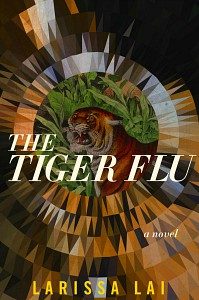Amazon Affiliate Link | Bookshop.org Affiliate Link
This is a queer, Maori-inspired, pirate, biopunk fantasy with worldbuilding so intense that I will be honest, I often was not following it all. It takes place mid-war, during a tense stalemate, in a city that’s bio-engineered plants to be buildings, weapons, and almost everything else. Metal is practically outlawed. As punishment for crimes (or perhaps just for being poor), people have their minds wiped for a certain number of years (theoretically) to act as mindless workers for the government.
Between the intricate worldbuilding and the references to Maori culture, stories, and landmarks that I’m sure I missed, this felt like a dense book to begin. But the story of the main character had me invested enough to let the rest of the story just wash over me.
Yat was once a street kid who scaled the roofs of buildings, lurking in the shadows and stealing to get by. Now she’s a cop, and she is busily convincing herself that she’s doing good in the world. It’s not exactly a leap up in respectability, though, partly because she recently got caught at a gay bar, which goes against the religious government’s orders. (Yat is bisexual.) Now she’s stuck working the night shift, trying to prove herself trustworthy.
Instead, she finds herself in the wrong place at the wrong time, gets shot in the face, and dies in the harbor… and then she wakes up. A god has resurrected her, and now she has strange powers. She’s a weaver, able to pull the life force from people and plants and direct it in different ways. She falls in with/is kidnapped by (depending on who you ask) a found family of pirates, led by a sapphic married couple that Yat can’t help but envy for their freedom to have this relationship outside of the shadows. Now, obviously, queer pirate found family is an excellent selling point, but I do have to let you know that doesn’t come in until halfway through the book. In fact, the description on the back covers more than half the plot of the entire novel.
Because this is the first book in a series and it has such ambitious worldbuilding, much of this book seems to be setting up for the rest of the series, explaining how the world works: who is at war with whom, how the magic system operates, the status of the gods, etc. The heart of the story shines through, though, and I am definitely invested. I’m looking forward to seeing where this story goes next.
This is being pitched as Gideon the Ninth meets Black Sun, so if you’re looking for a queer fantasy with a fascinating and expansive setting, I highly recommend this one. Just be prepared to dive in and let the details flow past you, because The Dawnhounds is not interested in holding your hand through it all.
Content warnings: f slur, homophobia and biphobia, body horror


